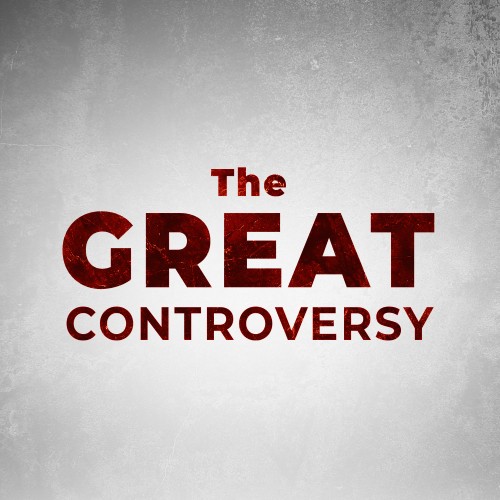Many of the Protestant churches are following Rome’s example of iniquitous connection with “the kings of the earth”—the state churches, by their relation to secular governments; and other denominations, by seeking the favor of the world. And the term “Babylon”—confusion—may be appropriately applied to these bodies, all professing to derive their doctrines from the Bible, yet divided into almost innumerable sects, with widely conflicting creeds and theories.
Besides a sinful union with the world, the churches that separated from Rome present other of her characteristics.
A Roman Catholic work argues that “if the Church of Rome were ever guilty of idolatry in relation to the saints, her daughter, the Church of England, stands guilty of the same, which has ten churches dedicated to Mary for one dedicated to Christ.”—Richard Challoner, The Catholic Christian Instructed, Preface, pages 21, 22.
And Dr. Hopkins, in “A Treatise on the Millennium,” declares: “There is no reason to consider the antichristian spirit and practices to be confined to that which is now called the Church of Rome. The Protestant churches have much of antichrist in them, and are far from being wholly reformed from … corruptions and wickedness.”—Samuel Hopkins, Works, vol. 2, p. 328.
Concerning the separation of the Presbyterian Church from Rome, Dr. Guthrie writes: “Three hundred years ago, our church, with an open Bible on her banner, and this motto, ‘Search the Scriptures,’ on her scroll, marched out from the gates of Rome.” Then he asks the significant question: “Did they come clean out of Babylon?”—Thomas Guthrie, The Gospel in Ezekiel, page 237.
“The Church of England,” says Spurgeon, “seems to be eaten through and through with sacramentarianism; but nonconformity appears to be almost as badly riddled with philosophical infidelity. Those of whom we thought better things are turning aside one by one from the fundamentals of the faith. Through and through, I believe, the very heart of England is honeycombed with a damnable infidelity which dares still go into the pulpit and call itself Christian.”
What was the origin of the great apostasy? How did the church first depart from the simplicity of the gospel? By conforming to the practices of paganism, to facilitate the acceptance of Christianity by the heathen. The apostle Paul declared, even in his day, “The mystery of iniquity doth already work.” 2 Thessalonians 2:7. During the lives of the apostles the church remained comparatively pure. But “toward the latter end of the second century most of the churches assumed a new form; the first simplicity disappeared, and insensibly, as the old disciples retired to their graves, their children, along with new converts, … came forward and new-modeled the cause.”—Robert Robinson, Ecclesiastical Researches, ch. 6, par. 17, p. 51. To secure converts, the exalted standard of the Christian faith was lowered, and as the result “a pagan flood, flowing into the church, carried with it its customs, practices, and idols.”—Gavazzi, Lectures, page 278. As the Christian religion secured the favor and support of secular rulers, it was nominally accepted by multitudes; but while in appearance Christians, many “remained in substance pagans, especially worshiping in secret their idols.”—Ibid., page 278.
Has not the same process been repeated in nearly every church calling itself Protestant? As the founders, those who possessed the true spirit of reform, pass away, their descendants come forward and “new-model the cause.” While blindly clinging to the creed of their fathers and refusing to accept any truth in advance of what they saw, the children of the reformers depart widely from their example of humility, self-denial, and renunciation of the world. Thus “the first simplicity disappears.” A worldly flood, flowing into the church, carries “with it its customs, practices, and idols.”
Alas, to what a fearful extent is that friendship of the world which is “enmity with God,” now cherished among the professed followers of Christ! How widely have the popular churches throughout Christendom departed from the Bible standard of humility, self-denial, simplicity, and godliness! Said John Wesley, in speaking of the right use of money: “Do not waste any part of so precious a talent, merely in gratifying the desire of the eye, by superfluous or expensive apparel, or by needless ornaments. Waste no part of it in curiously adorning your houses; in superfluous or expensive furniture; in costly pictures, painting, gilding…. Lay out nothing to gratify the pride of life, to gain the admiration or praise of men…. ‘So long as thou doest well unto thyself, men will speak good of thee.’ So long as thou art ‘clothed in purple and fine linen,’ and farest ‘sumptuously every day,’ no doubt many will applaud thy elegance of taste, thy generosity and hospitality. But do not buy their applause so dear. Rather be content with the honor that cometh from God.”—Wesley, Works, Sermon 50, “The Use of Money.” But in many churches of our time such teaching is disregarded.
A profession of religion has become popular with the world. Rulers, politicians, lawyers, doctors, merchants, join the church as a means of securing the respect and confidence of society, and advancing their own worldly interests. Thus they seek to cover all their unrighteous transactions under a profession of Christianity. The various religious bodies, re-enforced by the wealth and influence of these baptized worldlings, make a still higher bid for popularity and patronage. Splendid churches, embellished in the most extravagant manner, are erected on popular avenues. The worshipers array themselves in costly and fashionable attire. A high salary is paid for a talented minister to entertain and attract the people. His sermons must not touch popular sins, but be made smooth and pleasing for fashionable ears. Thus fashionable sinners are enrolled on the church records, and fashionable sins are concealed under a pretense of godliness. (continues)

